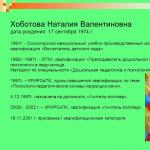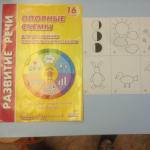Speech therapist tatyana alexandrovna tkachenko
Brief description of the methodology
One of the main tasks of children's educational institutions is the formation of a coherent speech in a preschooler, that is, the ability to clearly, logically, consistently talk about events and phenomena, easily combining individual sentences into a single semantic and structural whole. Among all types of connected speech, a special place is occupied by descriptive stories. Such stories are characterized by the creation of a verbal image of an object that is in a static (immobile) state. The lack of dynamics significantly complicates planning for the child, and, consequently, the formulation of a detailed statement.
Imagine that a kindergarten teacher shows preschoolers an ordinary tomato and asks them to write a story about it - a description. What to tell the child if nothing happens? What are the signs of a tomato? In what order should these signs be listed? How to keep in mind the intended sequence of presentation? What sentences should be used to make the story coherent and clear? Not only for a preschooler, but also for an ordinary primary school student, it is not easy to cope with such tasks ...
Many years of experience in practical work convinces us that with spontaneous speech development, the child is not able to master the compilation of descriptive stories. For such an activity, the most favorable speech environment is not enough. There is a need for targeted, evidence-based, systematic training under the guidance of a specialist, as well as the use of special visual aids.
As a universal aid for modeling a descriptive story by preschoolers, readers are offered graphic plans - schemes, which have been developed, refined and applied by the author in practice since 1983 ( the first publication of schemes in the journal "Preschool Education" No. 10 for 1990).
|
Scheme for describing and comparing toys |
 Tableware description and comparison scheme |
It is characteristic that without visual support (in the absence of a scheme) ordinary preschooler(without speech disorders) is not able to keep in memory the plan of the story - a description consisting more than 4 items. Obviously, the compilation of descriptive and comparative stories in the traditional version (without diagrams) is not available to children with ONR.
The proposed schemes allow the child to constantly adhere to the graphic plan of the story, consisting of 6 - 8 points. In addition, diagrams help a preschooler: highlight certain qualities of an object, visualize their quantity and sequence, follow this sequence when presenting a descriptive story and thereby make it more complete, accurate, coherent, continuous.
Considering the above, descriptive and comparative stories using the author's schemes can be used in the remedial education of children with OHP. at the launch stage.
Our diagrams reflect the most characteristic features of objects belonging to the main thematic groups from the State Preschool Education Program: toys, clothes, dishes, food, vegetables, fruits, domestic animals, wild animals, birds, people's professions, seasons.
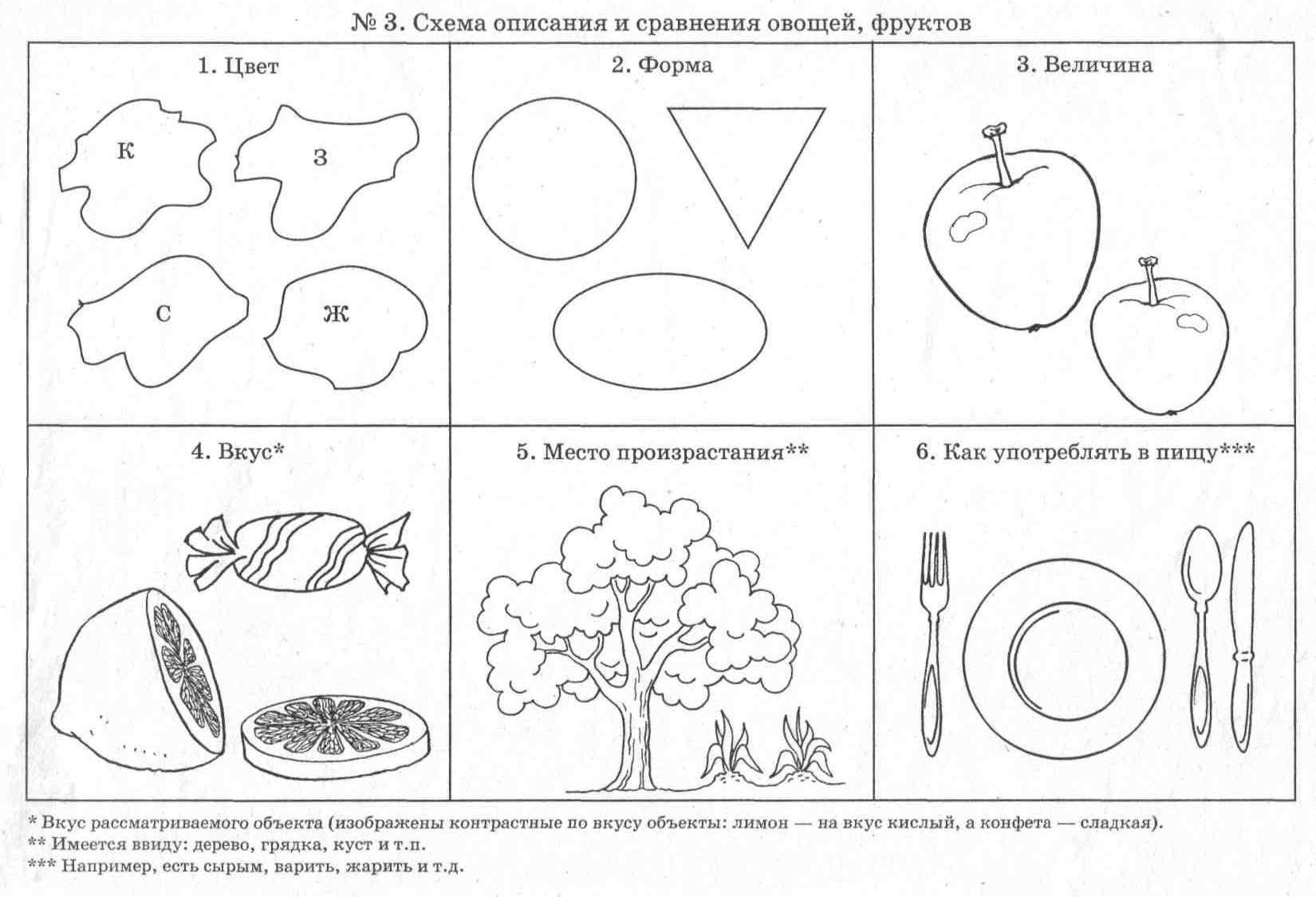 Scheme for describing and comparing vegetables, fruits |
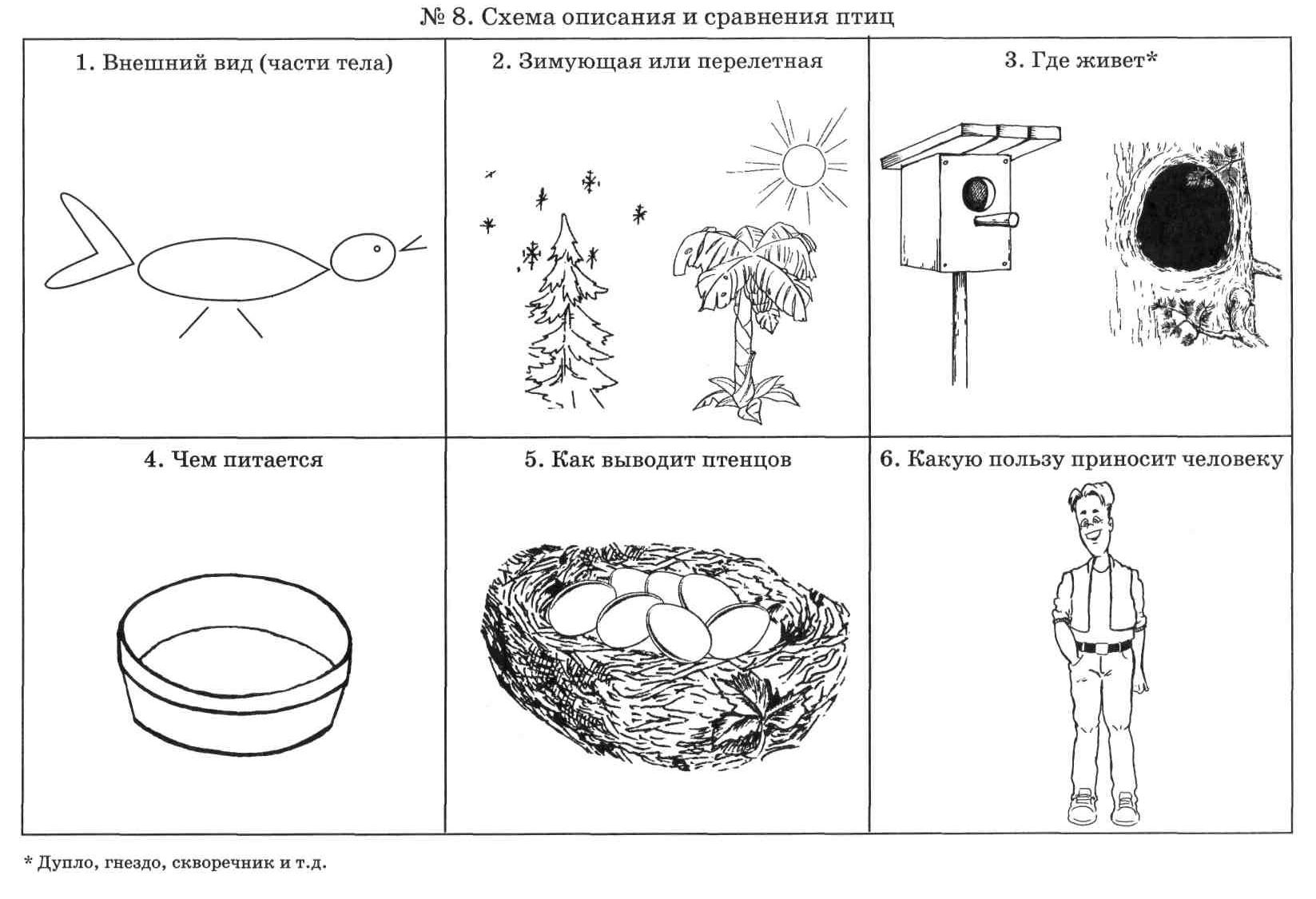 Scheme for describing and comparing birds |
Each feature is represented in the diagrams by special symbolic images accessible to preschool children. According to psychologists, the development of various signs and symbols helps the child not only analyze, compare, generalize to perceive reality, but also increases the mental age of the child, contribute to the transition of his thinking to a higher level.
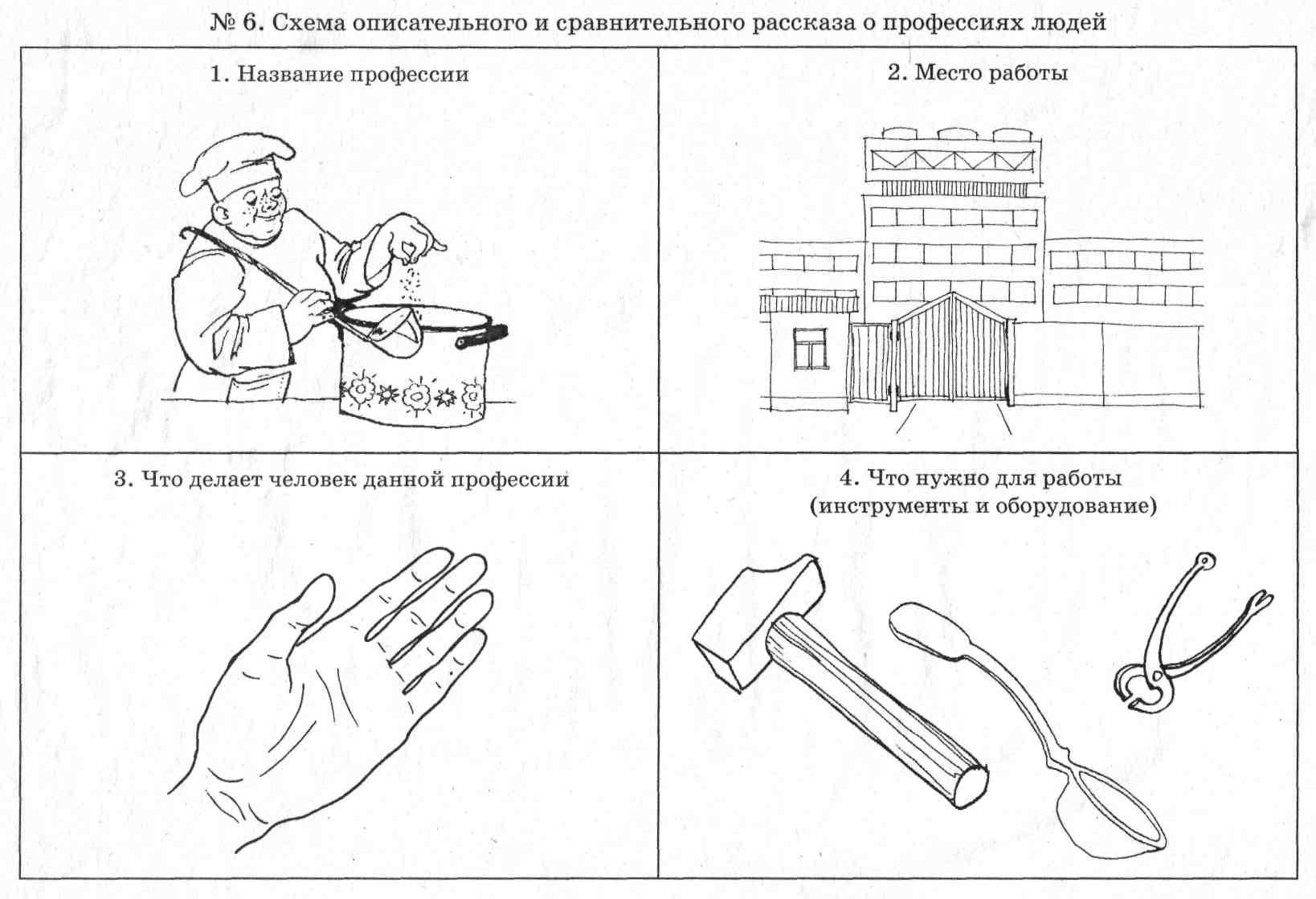 Scheme of a descriptive and comparative story about the professions of people |
 Clothing Description and Comparison Scheme |
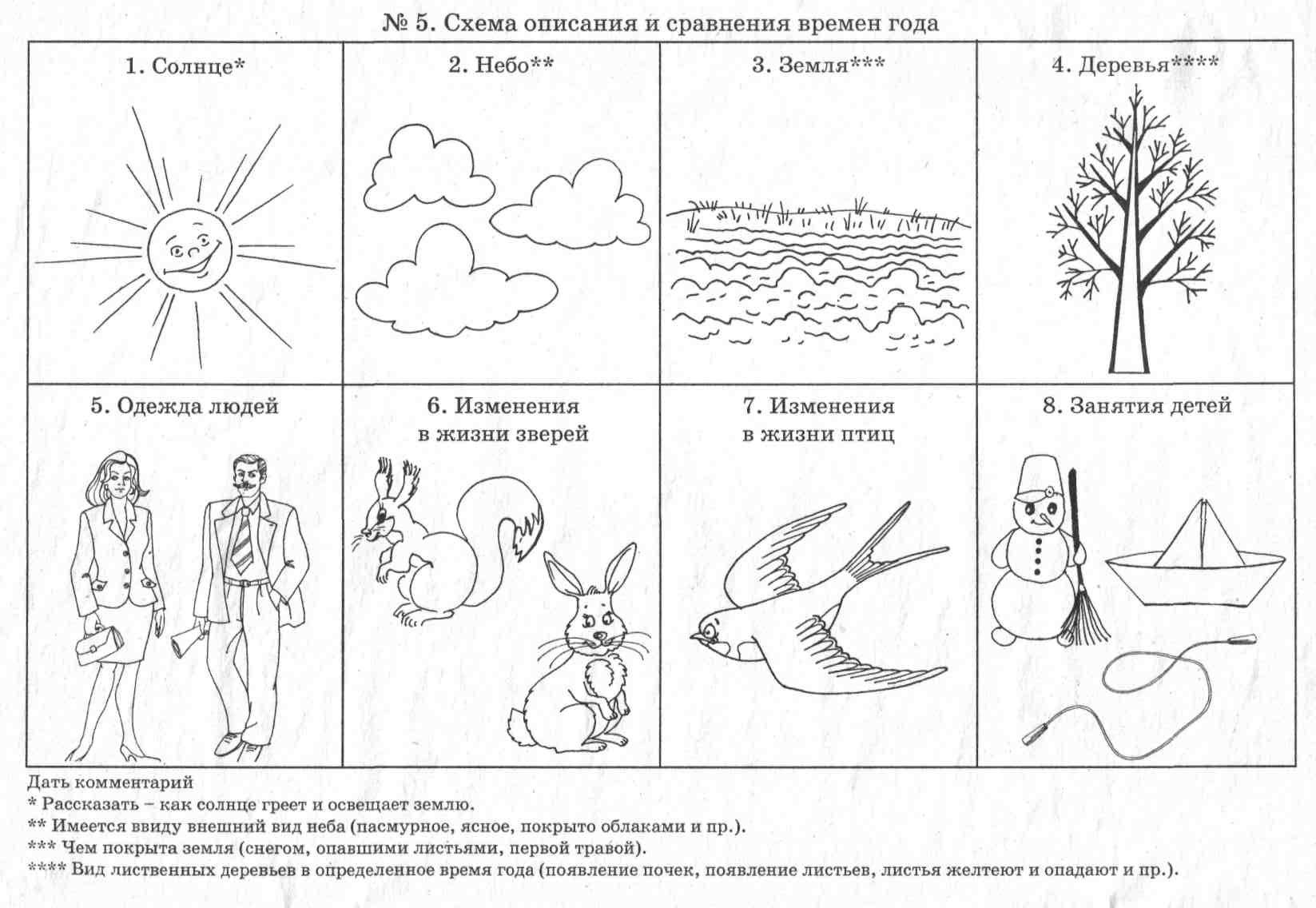 Scheme for describing and comparing the seasons |
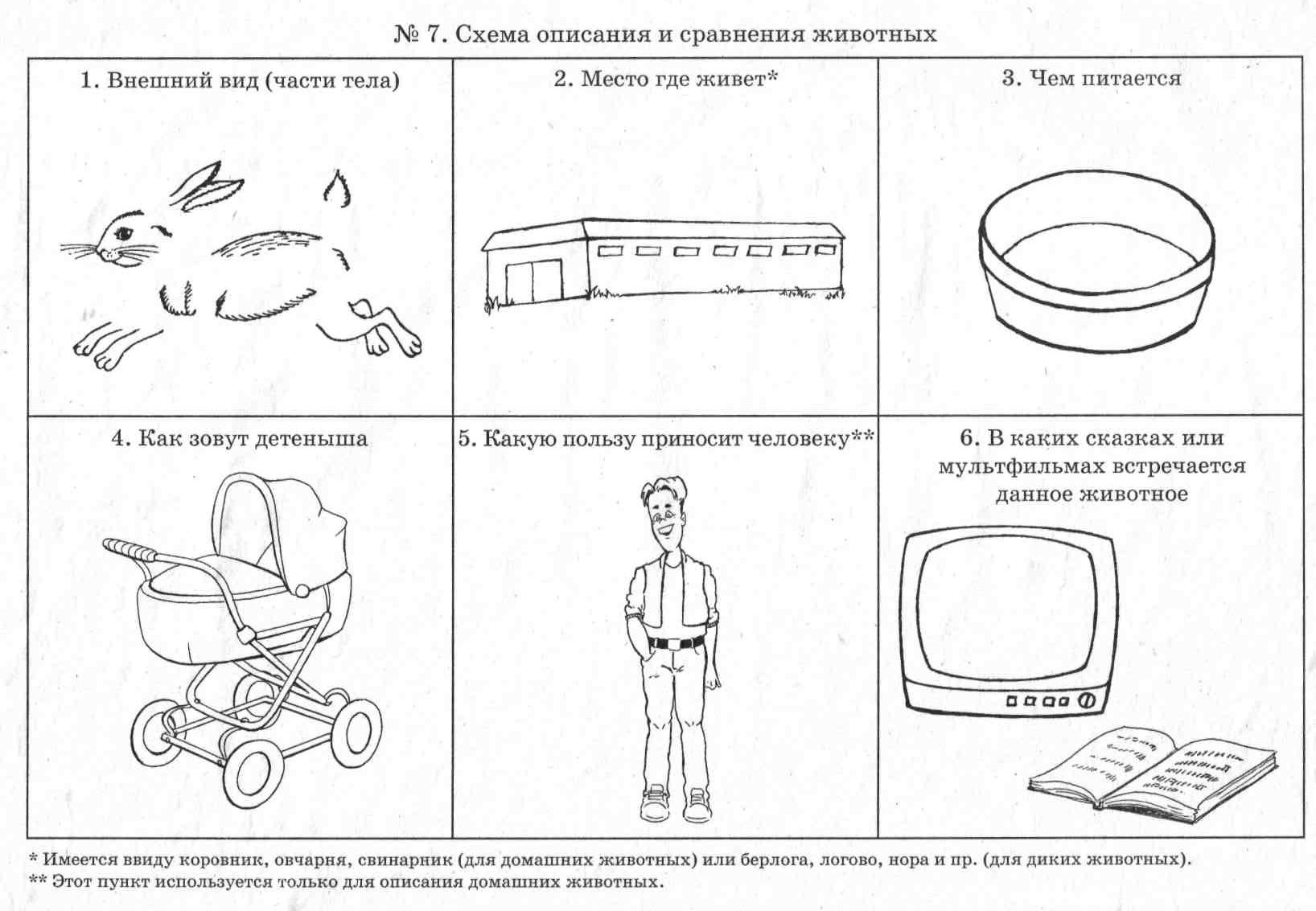 Scheme for describing and comparing animals |



